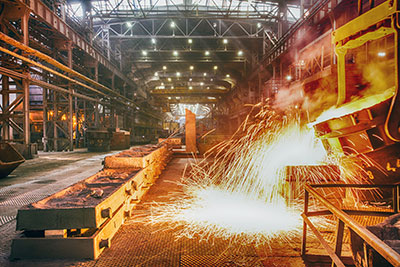Copper: Applications

The areas of application and use of copper are extremely wide and varied. And this fact is connected with the unique characteristics of this material. For copper has remarkable heat and electrical conductivity, and moreover, it has very high stability. Copper is a relatively soft and viscous, but at the same time, and resistant metal, which is well amenable to processing and deformation.
However, to date, about 40 percent of all used copper is used in the construction sector, both in electrical and plumbing installations. The next major area of copper use is electrical engineering. But copper is used not only in pure form, but also in the composition of various copper alloys, the most common of which are brass and bronze.
Without copper, it is impossible to introduce new technologies. We take a silicon computer chip or modern rail vehicles - copper is present wherever there is a need for reliable high-tech material.
High aesthetics and functionality
There are not many building materials that for a long time are able to maintain their technical functions at the same time without losing their aesthetic and design appeal. It is to such materials that copper also applies. Building material that forms its own protective layer, fully revealing its patina in the process of aging its artistic quality. Quality, durability and beauty are properties that for centuries support the popularity of this metal.
In the internal architecture, copper and its alloys, brass and bronze are now experiencing a real renaissance. And first of all, these solid and multifaceted materials are increasingly used by leading architects in representative buildings.
And do you know that copper becomes the No. 1 material in house installations?
More and more developers prefer copper pipes and fittings for drinking water installations. And in heating installations copper takes an even stronger position.
And the reason for this is as follows: Copper pipes do not become brittle with age, they are not flammable and do not emit toxic fumes in the fire. In addition, water in copper pipes keeps hygienic purity and they restrain the growth of bacteria.
In addition, copper can be used throughout the range of home installations - for cold and hot water supply, for heating, and for gas supply - without restrictions.
Without copper, there will be no alternative energy!
And this is because significant components of solar thermal solar plants are made of copper: The surface of the absorbers in the solar collectors is approximately 90 percent composed of copper plates, thickness approx. 0.2 mm with a selective coating - mainly black chromium or titanium oxide. But copper can be found not only here. This metal, up to 100 percent, is present in connecting tubes and cables, heat exchangers, pumps, control cables and blocking devices. The heat thus obtained is used to warm up drinking water, and also to provide heating. From this, first of all, the so-called low-energy buildings win.
But other alternative sources of energy, such as wind energy, ground heat or fuel cells, also need copper to transfer the received or produced energy with the maximum efficiency and minimal environmental impact.
And moving forward without copper is not possible, because without this material your car will not budge. In a middle class passenger car, due to the installation of various electronic components and electrical parts, about a kilometer of copper cable is laid.
Electric vehicles and vehicles with a hybrid drive, in which the traditional engine is supplemented with an electric motor, have reached a new stage of development. Leading automakers have already done a great job in this direction and invested in this system considerable financial resources. Since both types of such vehicles use an electric motor, they use much more copper than traditional cars, which already use 25 kg of copper and copper alloys.
Copper becomes a wire
Most of the copper production due to the excellent electrical conductivity of copper works on the electronics industry. In this case, copper is used in high, medium and low voltage networks, while setting scales for other electrical conductors. Due to its strength, formability and resistance to corrosion, copper is one of the most popular and reliable electrically conductive materials for building cables in buildings.
At the same time, copper is also used in windings of electric motors, coils, generators, transformers, current-carrying systems and switching devices.
Future Technologies Need Copper
The excellent characteristics of copper, as an electrical conductor, make it an excellent material for connecting tiny switches or transistors in microprocessors, without which modern computer systems are impossible. While switches are becoming smaller, and the number of them increases, the power also increases, but with it the complexity of electrical wiring increases as well. The thinner and already must be wiring in semiconductor chips, the more there is the application for copper. Copper provides a more rapid signal transmission.
An indispensable element of copper is in other modern communication technologies, such as communication technology, radio and television, mobile telephony.
Copper - metal money
Even at the dawn of civilization, mankind began using copper to mint small coins. And such use of copper is not forgotten even today - most countries' coins have copper in their composition. The unique plasticity of copper ensures coinage of any size coinage of a clear image, while the remarkable electrical conductivity of copper provides the possibility of using these coins in trading and coin machines. Another advantage of copper in coins is its antibacterial properties and a low risk of allergic reactions to it.
Without copper - nowhere
Refrigeration and air-conditioning units should be small, noiseless and efficient. For the heart of such installations - a condenser and an evaporator - copper is an indispensable material, and copper pipes are a reliable means of transportation for the used refrigerants.
Copper components for refrigeration and air conditioning units provide already familiar advantages: excellent corrosion resistance, good thermal conductivity, easy bending in hot and cold conditions, and simple welding and brazing.


